Lesson summary
Students explore the impacts of litter on liveability and sustainability in urban environments by examining real-world examples and discussing collective and individual actions. They learn about effective strategies to reduce litter and consider how these approaches can lead to cleaner, healthier and more enjoyable communities.
These resources are part of the Clean Up Australia Education Resources created in collaboration with Clean Up Australia.
Learning intentions
Students will:
- understand the social, environmental and economic impacts of litter in community environments
- explore how individual and collective actions can contribute to creating liveable, sustainable cities
- identify and analyse different strategies for reducing litter and improving sustainability, relating these to social, environmental and economic impacts.
Success criteria
Students can:
- identify the social, environmental and economic impacts of litter in community environments
- summarise the different strategies and actions that can contribute to creating liveable, sustainable communities
- analyse a collective action related to sustainability and litter to identify the social, environmental and economic impacts of its adoption.
Lesson guides and printables
Curriculum links
Select your curriculum from the options below.
Lesson details
Skills
This lesson is designed to build students’ competencies in the following skills:
- creative thinking
- critical thinking
- collaboration
- community engagement
Curriculum Mapping
Australian Curriculum (v9.0) content description:
Year 8, Geography
Students learn about:
- strategies to manage the sustainability of Australia’s changing urban places (AC9HG8K09)
- Identify a strategy for action in relation to environmental, economic, social or other factors, and explain potential impacts (AC9HG8S05).
Relevant parts of Year 8 achievement standards: Students explain responses or strategies to address a geographical phenomenon or challenge, referring to environmental, economic or social factors.
NSW Syllabus outcomes:
A student
- discusses management of places and environments for their sustainability (GE4-5)
General capabilities: Critical and Creative Thinking
Cross-curriculum priority: Sustainability
Level of teacher scaffolding: Medium - the teacher facilitates discussions, explains key concepts, and supports group activities and differentiation to ensure all students engage successfully.
UN Sustainable Development Goals
- Target 4.7: By 2030, ensure that all learners acquire the knowledge and skills needed to promote sustainable development, including, among others, through education for sustainable development and sustainable lifestyles, human rights, gender equality, promotion of a culture of peace and non-violence, global citizenship and appreciation of cultural diversity and of culture’s contribution to sustainable development
Resources Required
- Device capable of displaying audiovisual material
- Devices for student research
- Printed copies of the Community Stories - case studies
- Student Worksheet
- Visual Explainer
Additional Info
After completing this lesson plan, your school may like to take part in a Clean Up, which can take place on Schools Clean Up Day or any day that suits your school. As part of the Clean Up, asking your class to complete the Litter Report, which is included in your kit materials, will contribute greatly to Clean Up Australia’s data collection efforts. You’ll be joining thousands of amazing teachers in making a difference and creating positive environmental change. For more information on how you can get involved, download The Clean Up Australia Educator's Guide here.
Related Professional Learning
Students, Schools and Eco-Anxiety: Teaching and Learning for Eco-Optimism
Quick Summary: This aligns with our carbon cycle lesson, where students explore how Earth’s systems interact through key processes like combustion and photosynthesis. This PL supports you in guiding students beyond the science, helping them connect the dots between knowledge, systems thinking, and meaningful action.
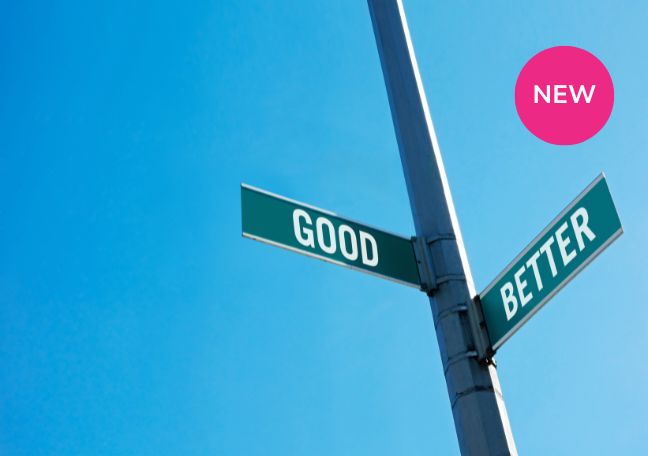
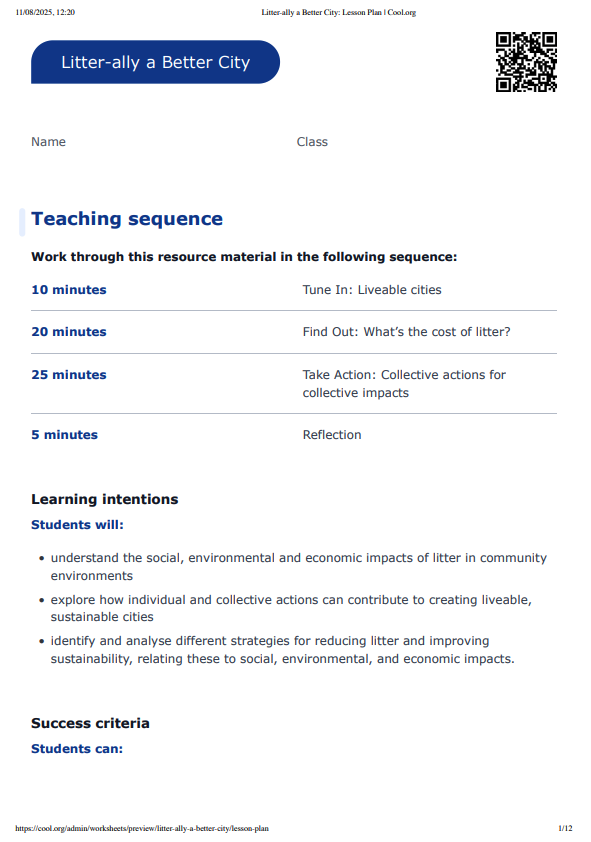
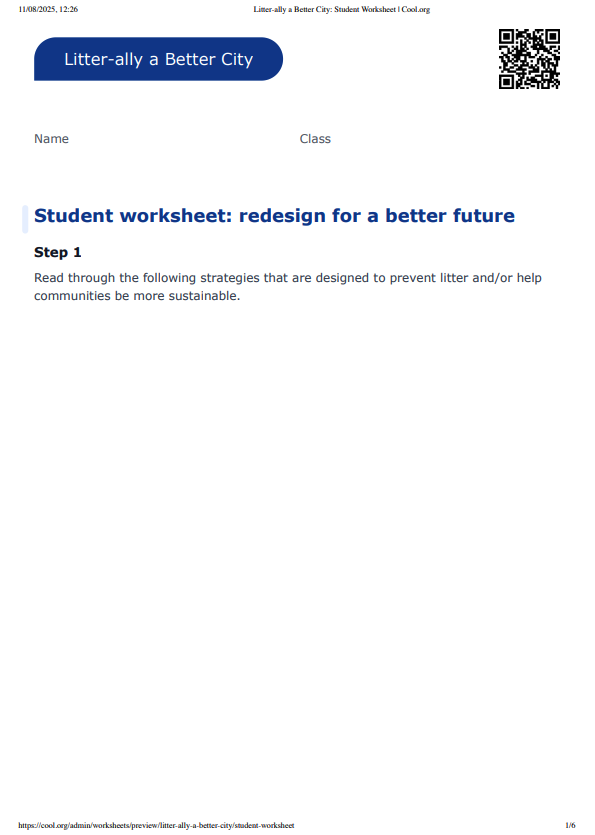
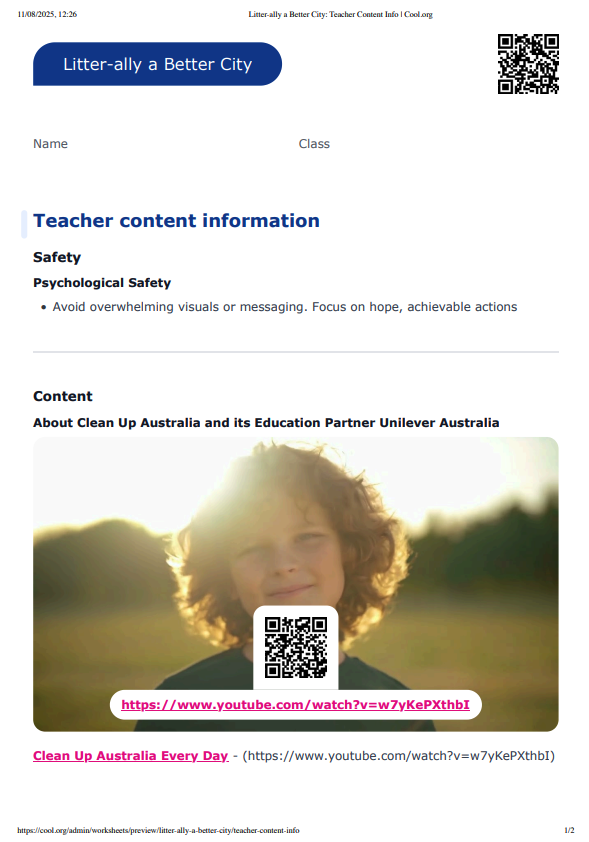
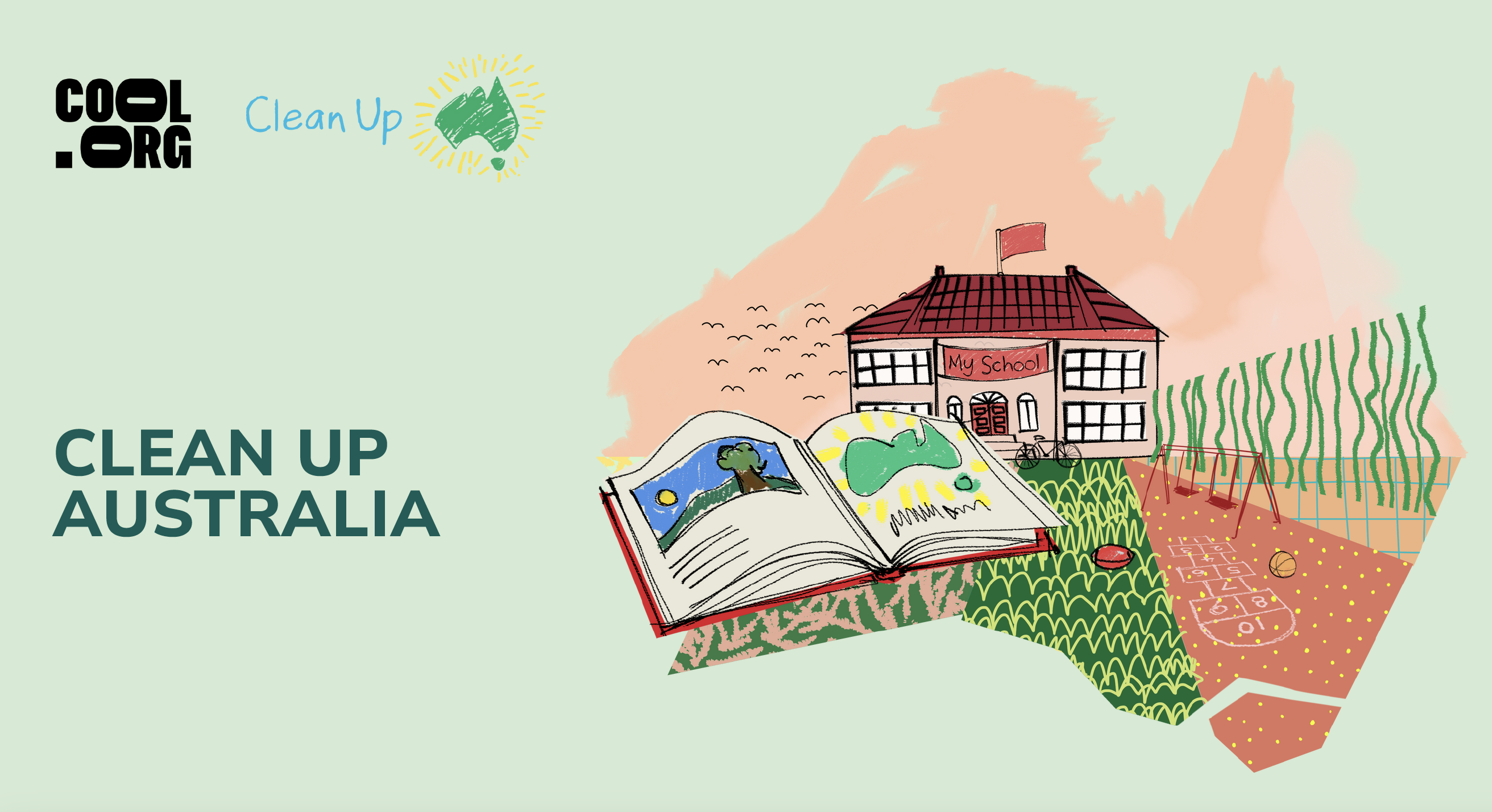
Welcome back!
Don't have an account yet?
Log in with:
Create your free Cool.org account.
Many of our resources are free, with an option to upgrade to Cool+ for premium content.
Already have an account?
Sign up with:
By signing up you accept Cool.org's Terms and Conditions(Opens in new tab) and Privacy Policy(Opens in new tab).